5 MIN READ
Irrigation Scheduling for Grain Sorghum
February 7, 2023
Overview
Water stress can substantially affect grain sorghum yield potential; the extent of yield loss depends on the growth stage at which the stress occurs. The most critical period to avoid water stress is from about one week prior to emergence of the grain head from the boot (exertion) through two weeks past flowering. To preserve yield potential, it is important to monitor soil moisture content and apply irrigation when soil moisture is depleted to critical levels, especially during periods of high water use by the crop.
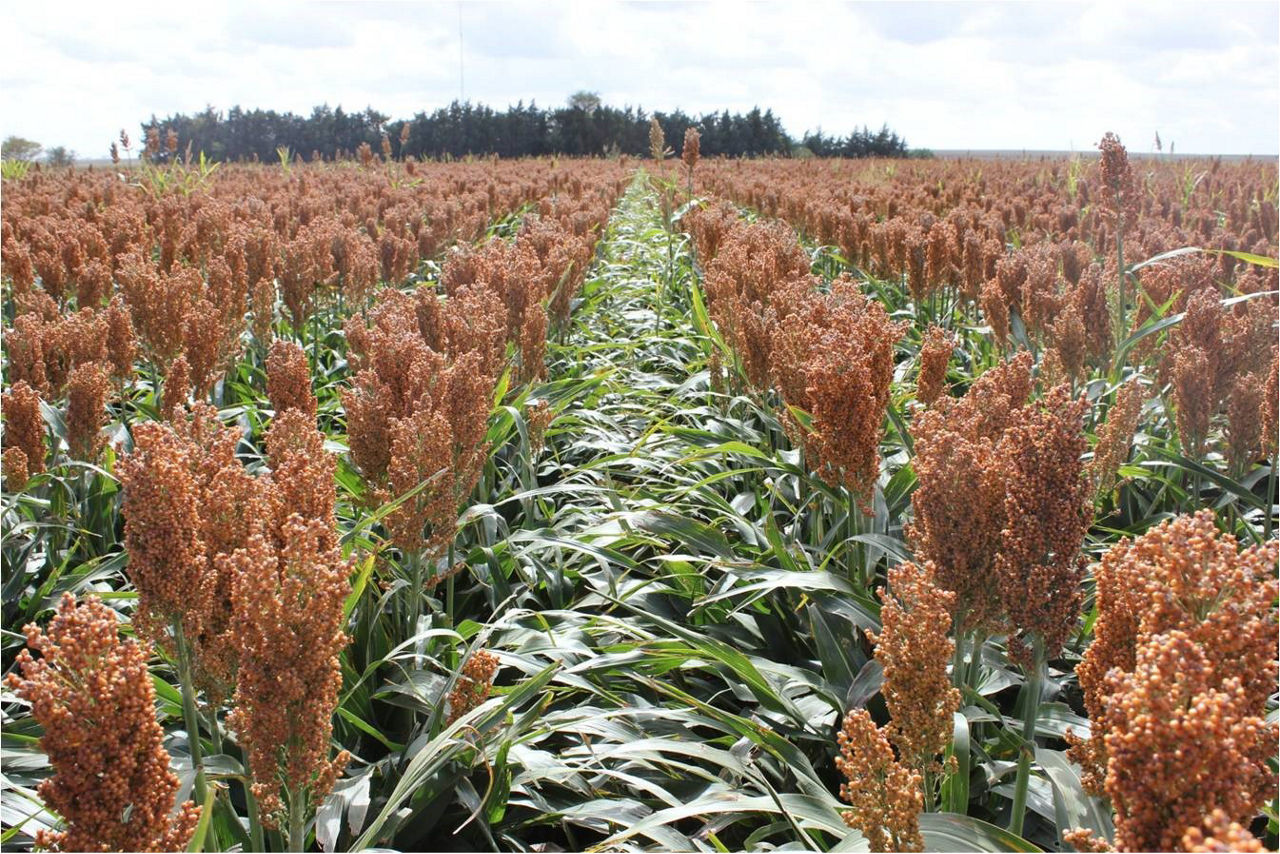
Characteristics of Grain Sorghum
To properly manage irrigation for grain sorghum, it is important to know the growth stages of the crop (Table 1), and when water stress is most likely to impact yield. Table 2 condenses the growth stages into three broad categories, indicating that the boot to flowering stages is the most critical time for the crop to have adequate soil water available.2 The extensive and fibrous root system of a grain sorghum plant will primarily use water from the top 3 feet of the soil profile (can potentially extend to depths of 4 to 6 feet) which allows it to withstand drought conditions better than corn.
Table 1. Grain sorghum growth and development stages.*1
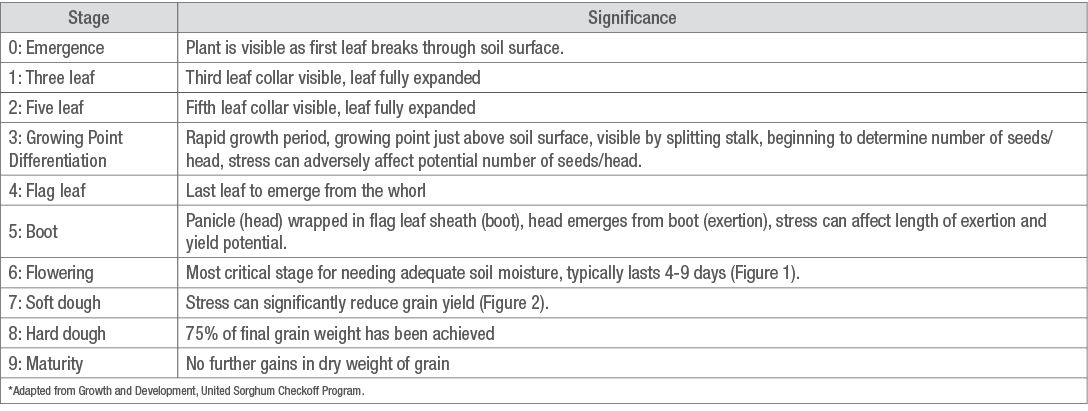
Table 2. Potential reduction in yield from moisture stress.2
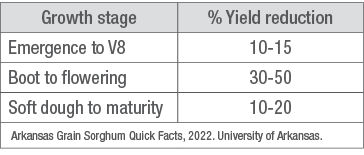

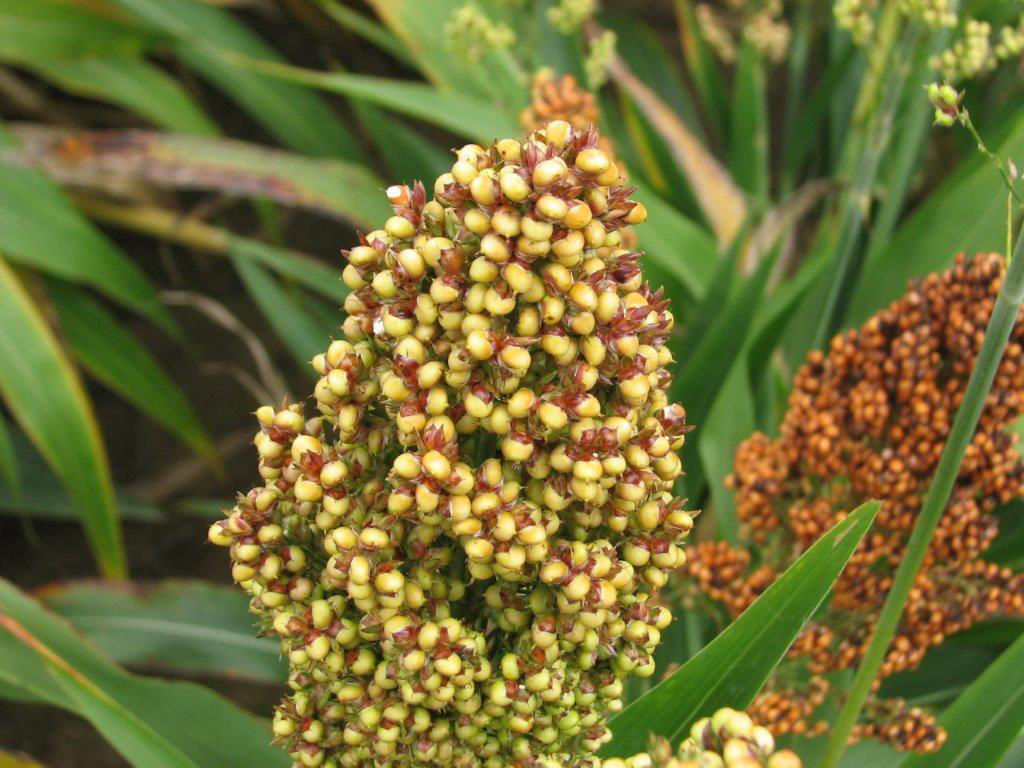
Figure 2. Grain sorghum in the soft dough stage.
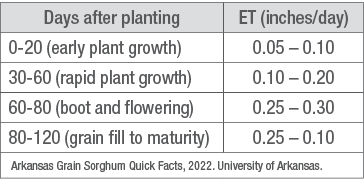
Sorghum Water Use at Different Growth Stages
The total water usage, known as ET (soil evaporation (E) and plant transpiration (T)) to produce a sorghum yield of 7,000 lb/acre (125 bu/acre) has been estimated to be about 28 inches of water/acre.3 However, total water usage can vary by product maturity, planting date, environmental conditions, and final yield. Daily water usage varies by growth stage (Table 3).
Table 3. Estimated grain sorghum water use by growth stage.2
Planting to early growth (stages 0-2, Table 1). During early growth (germination to 6 mature leaves), water use is relatively low; however, stress at this time can affect future growth, plant size, and yield potential. After seedling establishment, water use by the plant increases gradually. While in the rapid growth phase, the seed panicle and the number of ovules that can potentially develop into seeds (kernels) are forming within the stalk. Any water shortage during this developmental stage can be detrimental to yield potential and overall plant health.
Early reproductive stage (stages 3-6, Table 1). The most critical period to avoid water stress is from about one week prior to the emergence of the grain head from the boot (exertion) through two weeks past flowering. During this time, plants suffering from severe drought may not be able to push the grain head out of the boot (Figure 3). If the head does not completely emerge, pollination will not occur on that part of the head that remains within the boot, reducing grain yield. The plant needs about 0.2 to 0.3 inch of water per day during this phase. Approximately 8 to 10 inches of water (if available) will be consumed by bloom stage.
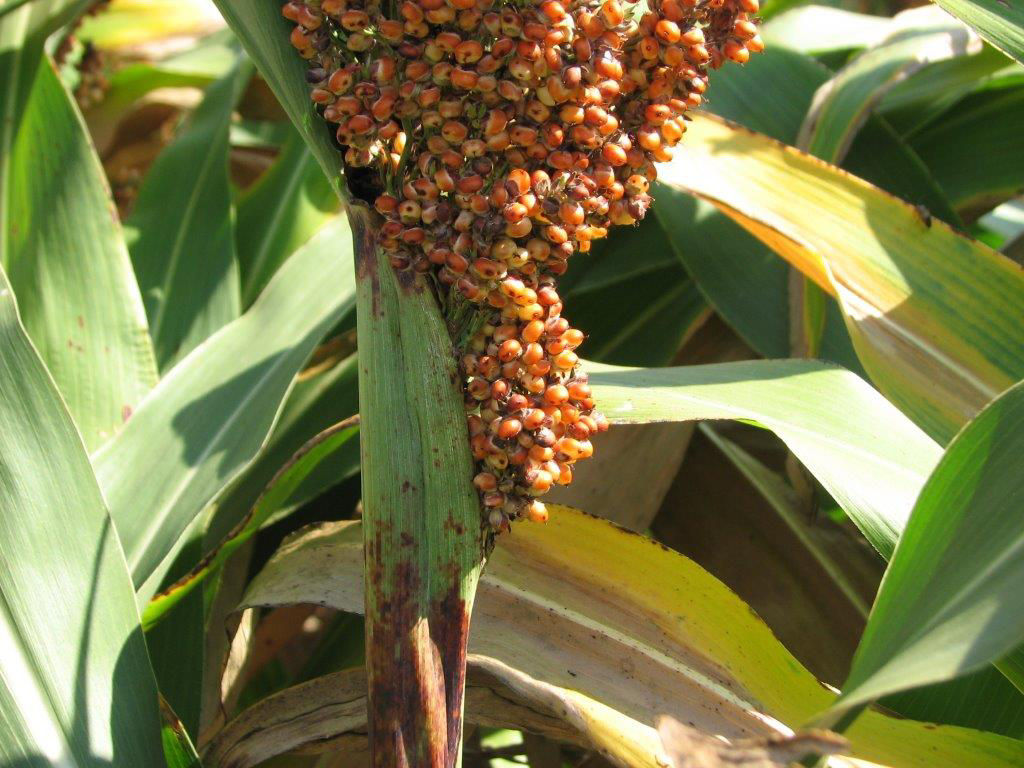
Reproductive stage through maturity (stages 6-9, Table 1). The reproductive phase begins with bloom and lasts about 45 days until physiological maturity, or black layer. About 0.3 inch of water per day will be used by the plant from just before bloom until early grain fill. Additional water after maturity will not add weight to the kernels but may help with stalk integrity if conditions are extremely dry.
Irrigation Timing
In general, soil moisture levels should be used to dictate when irrigation should be applied. If irrigation water is limited, farmers should consider the growth stage of the crop and reserve the water for the most critical stages.
Soil water holding capacity. The water holding capacity (WHC) of a soil is primarily due to its texture. Field capacity of soil is defined as the amount of water that a soil can hold against gravity and all excess water has been removed. Coarse soils (e.g., fine sand, loamy sand, sandy loam) will typically hold 1.5 inches or less (possibly as low as 1.0 inch) per foot of soil. Finer textured soils such as silty clay loam are considered to have about 1.8 inches per foot of soil, while others such as silt loam or loams often hold about 2.0 inches per foot. At field capacity, plants may be able to use water at a maximum rate. As water in the soil profile is used, it becomes more difficult for plant to extract it. A maximum allowable depletion (MAD) is typically 50% for most row crops. For example, a silt loam soil with a WHC of 2.0 inches per foot will hold a total of about 6 inches in the top three feet of the soil profile. Starting with a full profile, crop use of 0.2 to 0.3 inch per day will result in reaching MAD in 10-15 days. Exceeding 50% MAD may result in significant yield reductions.
Residue management/tillage system. Minimizing soil disturbance from tillage and increasing surface crop residue can reduce soil water evaporation. Tillage may increase the exposed surface area of the soil which can lead to greater amounts evaporation as well as surface runoff. Additional effects of tillage include the breakdown of physical soil properties and the oxidation of organic matter; therefore, increasing the likelihood of soil compaction, both of which can reduce water infiltration. Conversely, crop residue remaining on the soil surface helps improve water infiltration rates by limiting the amount of surface sealing created by the physical impact of rainfall or irrigation droplets. Residue also helps decrease runoff by creating obstructions that can slow the speed of water movement across the soil surface; therefore, allowing more time for water to infiltrate the soil profile.
Tools to Help Determine Soil Water
Tools available to help determine soil water range from low cost soil probes to more expensive soil moisture sensors and sophisticated web-based applications that have access to soil database and weather networks.
Soil moisture sensors can be installed at 1-, 2-, and 3-foot depths to measure soil moisture. The sensors should be located within the crop row and not placed into low areas. Soil moisture can be tracked by measuring water inputs from precipitation and irrigation and estimating losses from evapotranspiration (ET). Some states have web-based ET calculators to help determine water usage.
Managing Soil Moisture Through Row Spacing and Plant Density
Available moisture is an important factor in determining sorghum row spacing and planting population. A soil-shading canopy can develop quicker with narrower rows, which can help decrease the loss of soil water through evaporation. Water use increases with higher populations because plants are drawing upon water reserves; therefore, lower populations may be needed when water is limited.
General Irrigation Strategies
A general full-irrigation strategy from Texas A&M University is outlined below.
- Assuming the soil water profile is adequate to full at planting, additional water should not be necessary until the reproductive stage begins.
- At the beginning of the reproductive stage, a 4-inch irrigation can last until the flag leaf appears.
- Two 3-inch irrigations about two weeks apart at flag leaf or boot stage should carry the plants to the soft dough stage of kernel fill.
- A 3- to 4-inch irrigation at soft dough stage should be able to carry the crop to maturity.3
Several rules-of-thumb for determining the final irrigation include:
The University of Nebraska estimates that the amount of water needed by a grain sorghum crop to be about 5 inches from soft dough to maturity, and 2 inches from hard dough to maturity.4
Arkansas information suggests terminating furrow irrigation when >50% of the heads are at hard dough and soil moisture is adequate and terminating pivot irrigation when >75% of the heads are at hard dough and soil moisture is adequate.2
Sources
1Growth and Development. United Sorghum Checkoff Program. https://www.sorghumcheckoff.com/our-farmers/grain-production/growth-and-development/.
2Kelley, J. and Capps, C. 2022. 2022 Arkansas grain sorghum quick facts. University of Arkansas. https://www.uaex.uada.edu/farm-ranch/crops-commercial-horticulture/.
3Stichler, C. and Fipps, G. 2003. Irrigating sorghum in South- and South-Central Texas. L-5434. Texas A&M University. https://baen.tamu.edu/extension/publications/irrigation/.
4Klocke, N.L., Eisenhauer, D.E., and Bockstadler, T.L. 1991. Predicting the last irrigation for corn, grain sorghum and soybeans. NebGuide G82-602-A. University of Nebraska. https://digitalcommons.unl.edu/extensionhist/1193/.
Stichler, C., McFarland, M., and Coffman, C. 1997. Irrigated and dryland grain sorghum production, South and Southwest Texas. Texas A&M University. https://agrilifelearn.tamu.edu/s/product/irrigated-and-dryland-sorghum-production-in-south-and-southwest-texas/01t4x000004OUh7/.
Web sources verified 11/29/2022. 2121_62121






